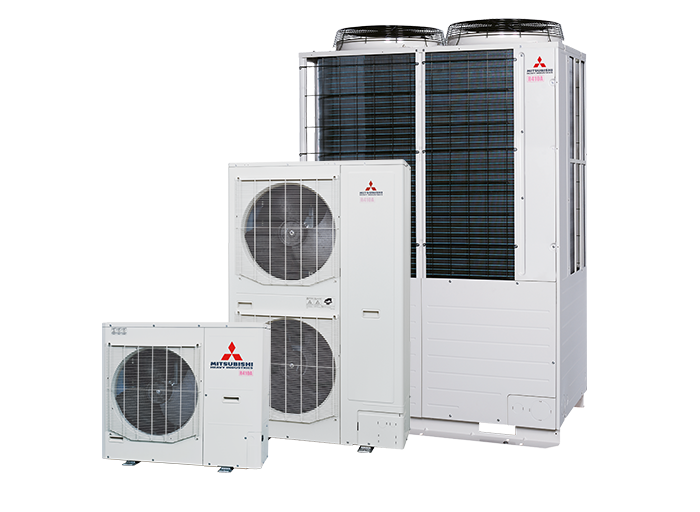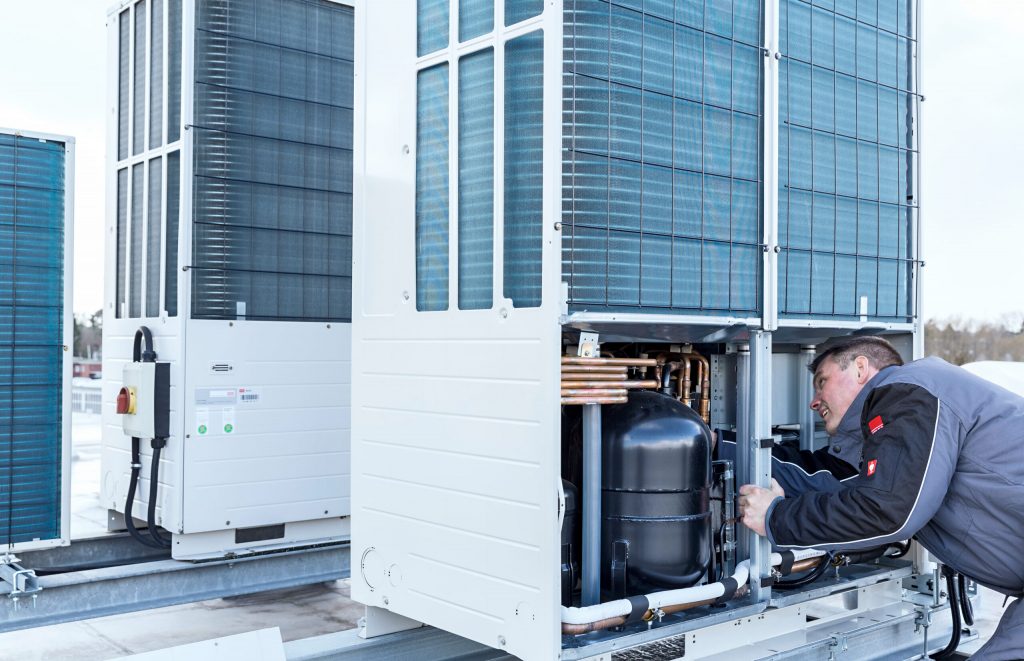VRF systems can heat, cool, ventilate and control at the same time. “We can combine them indefinitely to meet everyone’s wishes,” says Dennis van der Blom of Stulz. It will keep you updated on the latest developments and the current state of the art.
Text: Ruel van Gils
Mitsubishi Heavy Industries’ VRF systems, of which Stulz is a distributor, can be divided into two groups: 3-pipe systems and 2-pipe systems. “In contrast to a two-pipe system, the three-pipe system allows simultaneous heating and cooling,” explains van der Bloem. “Then the construction of the VRF range consists of devices in different power ranges. We can come up with a power range of 168 kW for cooling and 189 kW for heating. For smaller projects there is a Lite variant, suitable for projects from 20 to 28 kW, and a Micro ( 12 to 15.5 kW), which is also available as an R32 unit from this year.”
VTCC
“If only half the power is needed, the compressor is further reduced and the suction pressure increased,” Van der Blom continues. “VTCC is not oriented at the minus 1 set point, but at plus 0.1. Once the tipping point is reached and the units are requesting more power, the compressor will go to full throttle. This results in fewer starts and stops for the installation and energy savings of 22% per year. The level of comfort is also higher, because the units blow out less coldness in the room.”
CHCC
The three-pipe VRF system has a different control: CHCC, or Continuous Heating Capacity Control. “The distribution of indoor units is secondary; CHCC aims in particular to make the freeze-installation process less rapid,” explains Van der Blom. “The control ensures that the installation will save heat for as long as possible in order to reduce the need for defrosting. An additional advantage here is the optimization of energy consumption.”
Existence revealed
All shared indoor units from Mitsubishi Heavy Industries’ VRF range can now be equipped with presence detection. “This provides efficiency gains, for example through the ability to automatically set the setpoint to the current occupancy,” says van der Bloem. “If no activity is detected for an hour, the installation will go to standby. After twelve hours it will be completely turned off. If someone enters the room during the installation in standby mode – eg after a lunch break or a meeting – the installation goes back to another status set.”
All shared indoor units from the VRF range can now be equipped with presence detection.
CompTrol ZLT
With the help of modern measurement and control technology, today’s VRF systems can be made more economical, more comfortable and safer, for example with hardware and software from the CompTrol series. The new ZLT serves up to 160 indoor units, either remote or remote. The operation of each indoor unit is again recorded for at least two years. This makes maintenance much easier and above all more comfortable for the building user. There is no need to manually check the unit to verify full load.
For decades, Stulz has been developing and individualizing climate solutions used around the world. “The latest developments from Mitsubishi Heavy Industries make life more enjoyable and beautiful every time. Since this year, Mitsubishi has supplied cassette units with the same shade of white and Eurogrid panel can be chosen for the grille or honeycomb. For example, progress can sometimes be found in the little things,” Van der Blom concludes.
Curious about how Stulz handles VRF projects? The company explains it based on a number of steps.
This article is sponsored by Stolz.

“Total coffee specialist. Hardcore reader. Incurable music scholar. Web guru. Freelance troublemaker. Problem solver. Travel trailblazer.”

:format(jpeg):fill(f8f8f8,true)/s3/static.nrc.nl/bvhw/wp-content/blogs.dir/114/files/2021/11/trujilo-vierkant.png)





More Stories
Pointing out: A nuclear reactor…but in space
“Ask at least one question in return.”
Elbendamers in the Sun: What a Wonderful Little Village